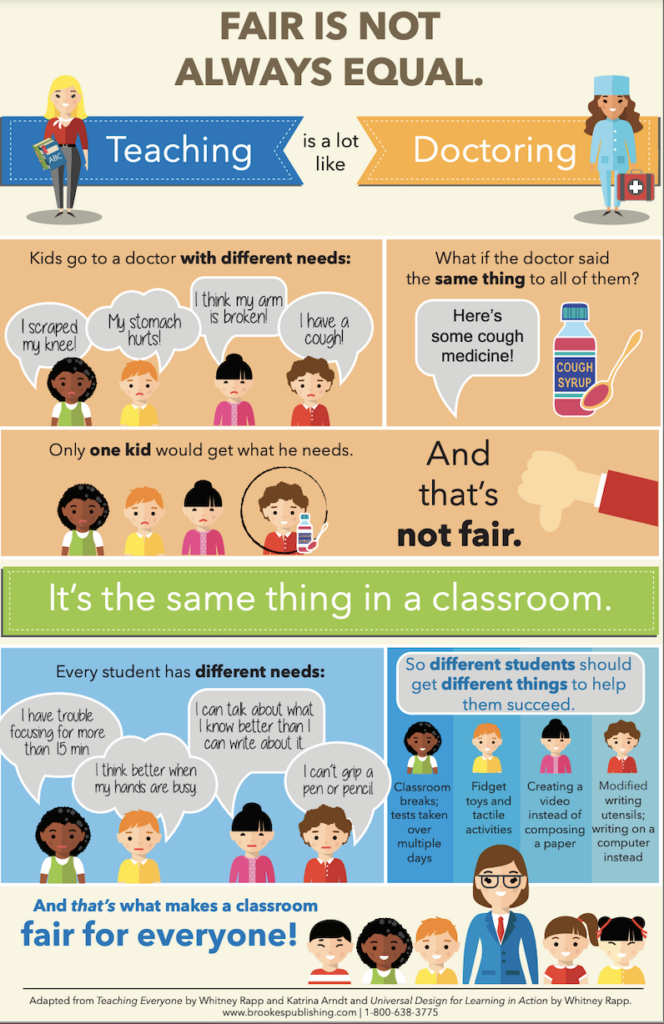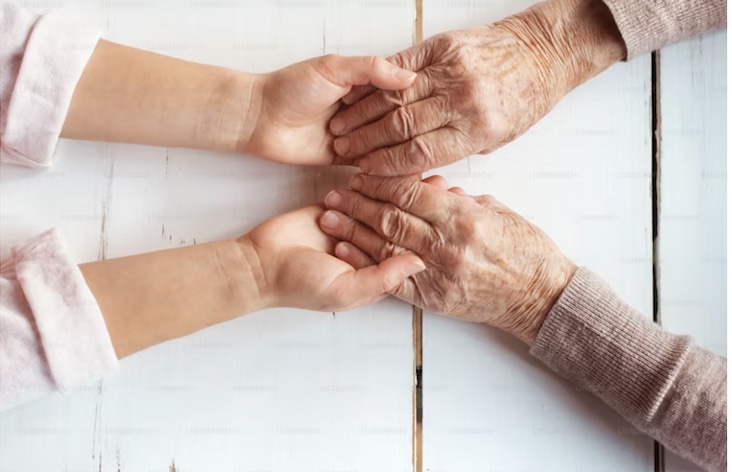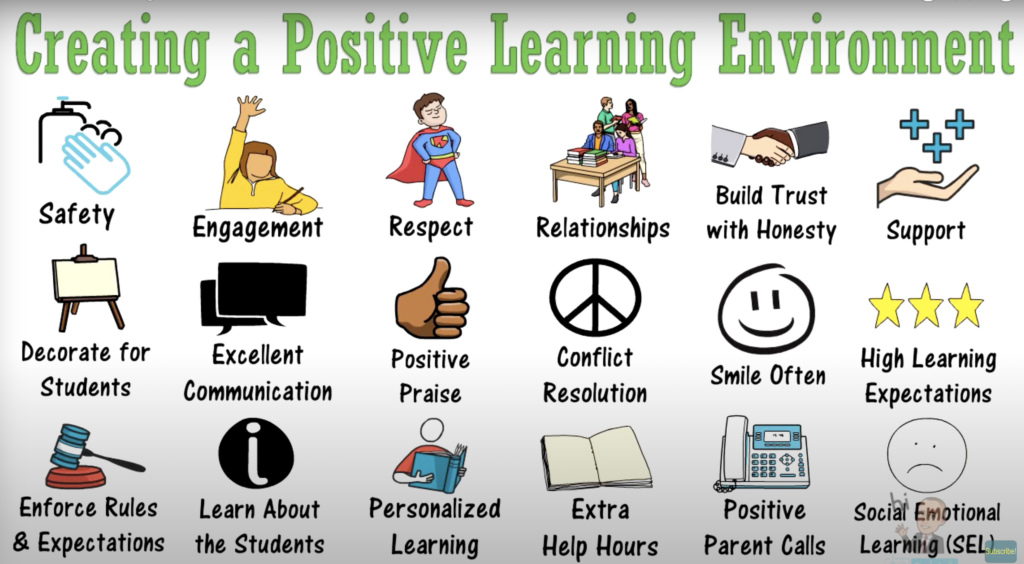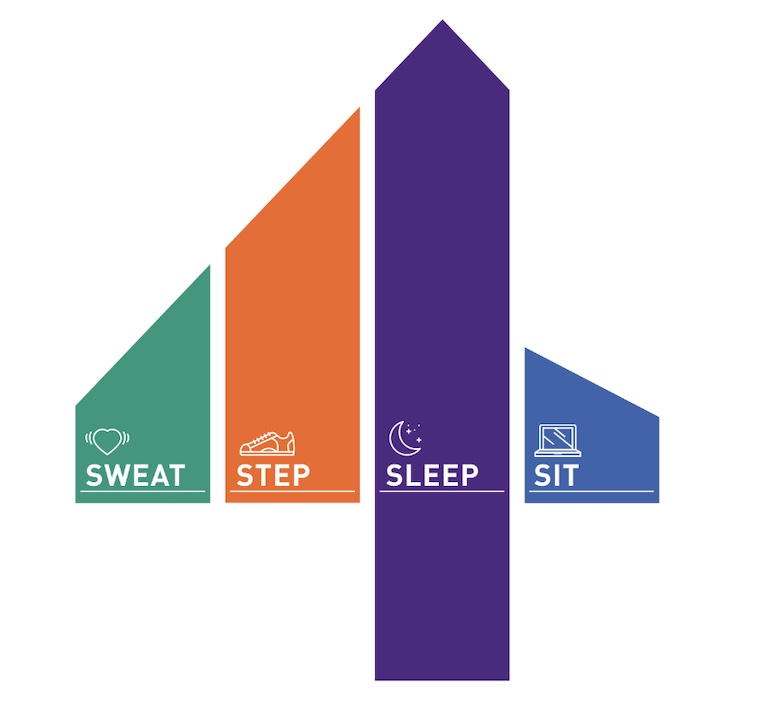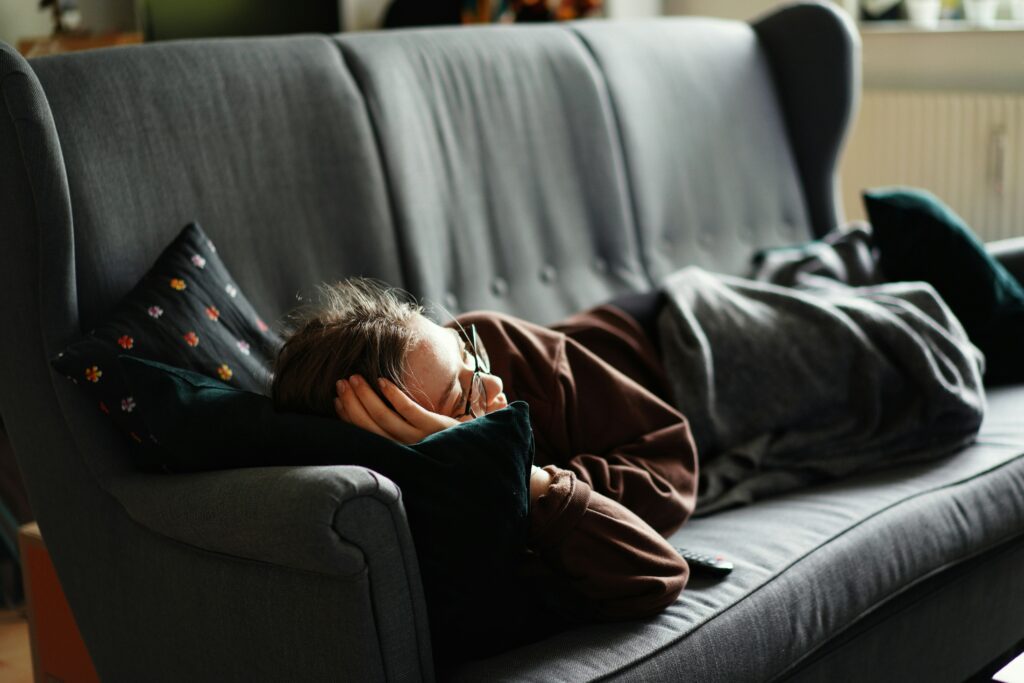SOMETHING I LEARNED WELL
One key framework I have grown to understand and know really well through this class is the comprehensive school health model (CSH). This framework highlights four pillars as the outlet to promoting healthy practices and a better school environment for everyone. I believe a school’s environment is the foundation to student success in learning, which is why recognizing and leveraging the four pillars of this model should be a priority to educators, partners, and community member serving all schools to create the best possible environment for their students.
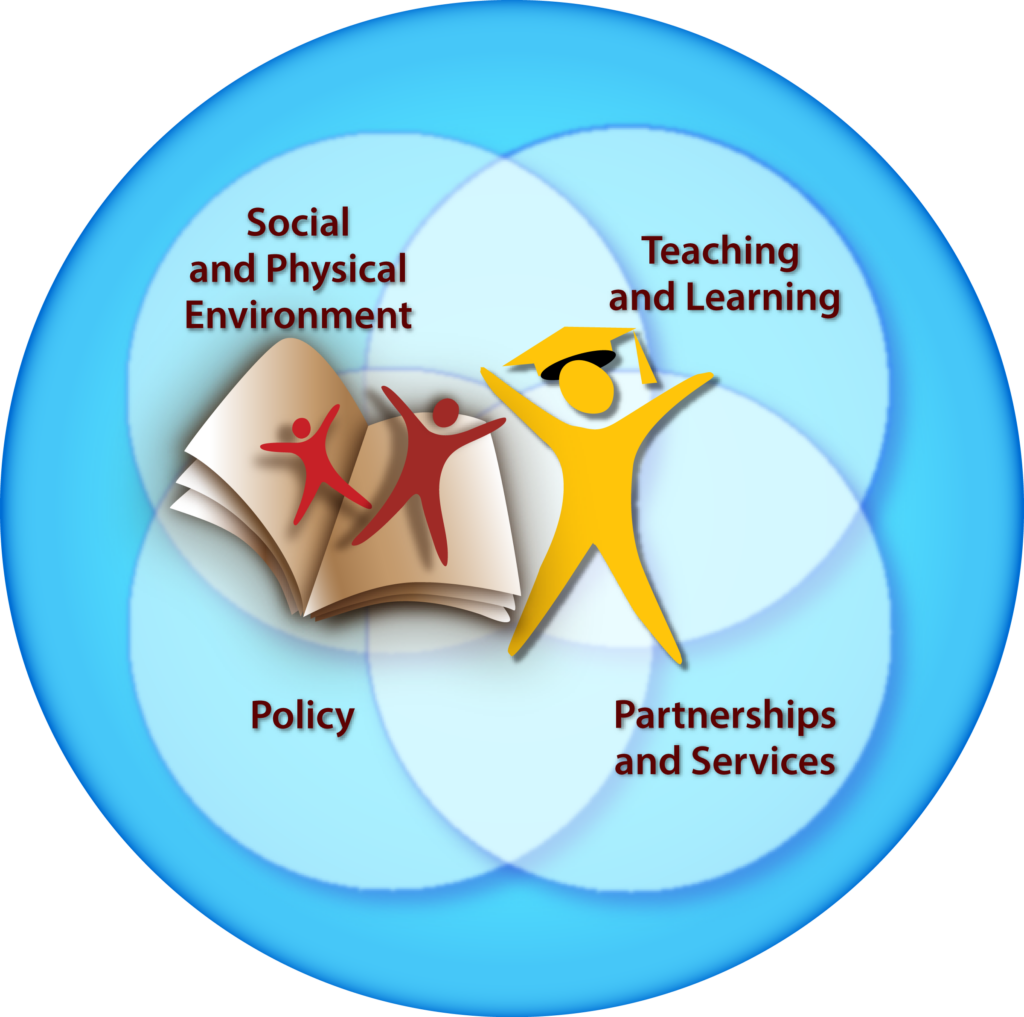
The CSH model appealed to me because:
- I value the idea of a holistic approach to health and wellness.
- I believe that with this approach, students can be more aware and mindful of the multifaceted influences on their health from the policies in their school to the partnerships in the community that influence their learning.
- Each pillar helps students understand information and adopt behaviours to achieve their health and wellness goals and maintain them beyond the classroom setting.
I plan to apply the steps toward a CSH model in my future career as a health educator by taking a holistic approach when educating my clients on health and wellness in different communities. After learning about this model, I now understand that many components go into creating a healthy environment for the people in it, whether it is in a school, a clinic, or in a recreational facility. Because they are so interconnected, my goal is to challenge myself in my career by integrating and addressing more than one of the social, physical, emotional, and mental health markers when planning and delivering health education programs.
Due to the nature of working with a broad demographic of individuals with unique attitudes about the topic of healthy and active living and its role in our lives, I envision that any job I take in the field of recreation and health education will demand me to think outside of the box to try to remove barriers and allow clients to access health promoting services. I also want to support my clients in building foundational skills in knowledge and movement to be able to feel confident, motivated, and competent with taking control over their own health without my support in the long-term.

SOMETHING THAT CAUGHT MY INTEREST

Something that I found surprising from the course was the ParticipACTION report card, and the statistics on the percentage of youth meeting the 24-hour movement guidelines. As an upper level student in the Recreation and Health Education program, I certainly had an idea that it would be a low number, however seeing that only 4% of youth met the guidelines was a shocking reminder that we still have a lot of work to do to improve the lifestyles of our children and youth because they are our future leaders. Additionally, something that will stick with me beyond this class is how important schools are in our society. They are a place where we have the opportunity to form foundational behaviours and attitudes towards health in children and youth, and if we take the right approaches, I believe we can increase the chance that students sustain the tools, experiences, knowledge, and behaviours they had while in school for the rest of their lives.
WHAT I WANT TO LEARN MORE ABOUT
One topic that could have been explored more in this class as it fits into the universal design for learning for inclusivity in classrooms is how to make physical and health education more inclusive for students specifically with learning disorders like high-functioning autism or ADHD. Studies find that students are being diagnosed with these disorders at a rate that has never been seen in history because the awareness around the topic is increasing (Morin, 2019). I think that a lot of typical PHE activities contain triggers, such as bright light, unclear instructions, and lots of noise, which make the experiences of individuals with learning disabilities in PHE frustrating and maybe even isolating. This is an issue because these negative experiences reduce their chances of being engaged in PHE classes, which could then be detrimental to their health and well-being. It is important to dive deeper into this area and explore how we can use the universal design for learning framework explored in this class to support this specific demographic of students because we have an ethical responsibility to continuously try to improve the learning experience by making adaptations to activities, supporting social confidence, and structuring environments so learners can have the equal opportunities to access, engage with, and express their understanding. Getting to know students by actually learning about their different strengths, interests, and needs (which includes different learning styles) allows educators to be more adaptable, patient, and aware of the outcome of their lessons. In sum, inclusive PHE that welcomes students to participate in a safe and comfortable space is not just for students who have learning disabilities, it is something that benefits all students and that is why it is such an important topic.
MY JOURNEY IN THIS CLASS
This semester has passed quickly and I can not believe this is my last blog post! Looking back on my learning journey, I came into this class with a strong understanding of health and it’s role in the social and community context outside of schools. As a result of this course, I can say with confidence that my understanding of physical and health education in the BC curriculum has deepened significantly. I believe I am at a place in my learning where I have learned the foundation of the curriculum and can now look at PHE school systems from a critical and analytical perspective. In school, my experience was not very holistic, so learning about the shift toward a more comprehensive approach has been pleasant news. I appreciate how modern physical and health education now emphasizes not just physical activity but also healthy and active living, community and social health, and mental well-being. These components together provide greater opportunities for students to engage in PHE in ways that resonate with them, even if they are not naturally inclined toward sports or fitness.

My views on creating inclusive, accessible, and engaging learning environments have also evolved. I came into this course with a strong understanding of its importance in recreation and health education, but seeing how it plays out in schools gave me a new perspective. I have gained a deep appreciation for the BC curriculum and how its various components (core competencies, big ideas, content, curricular competencies) work together as a cohesive framework. In my opinion, moving away from memorization and physical performance as indicators of success to introducing the new curriculum in 2016, which makes learning more equitable and meaningful through multiple means of representation, action and expression, and engagement, was a good move.
This course reinforced my belief that schools play a fundamental role in shaping society. The habits, interests, and values formed during childhood have a lasting impact, making schools one of the most effective places to promote lifelong well-being. Compared to trying to instill these habits later in life, early education provides a unique opportunity to nurture healthier lifestyles in a way that feels natural and sustainable.
REFERENCES
Morin, A. (2019, August 5). A history of learning disabilities and ADHD. Understood. https://www.understood.org/en/articles/history-of-learning-disabilities-and-adhd


